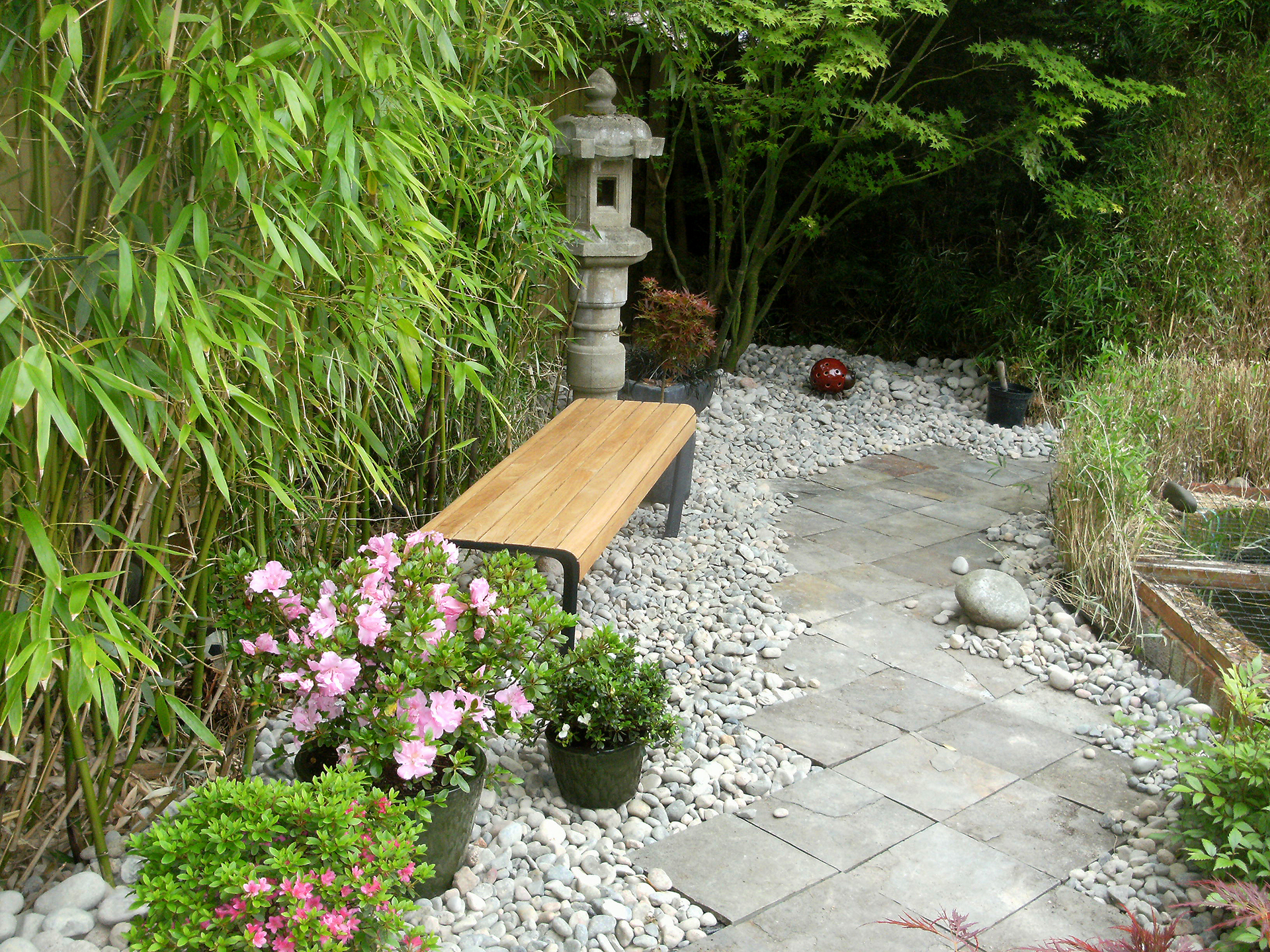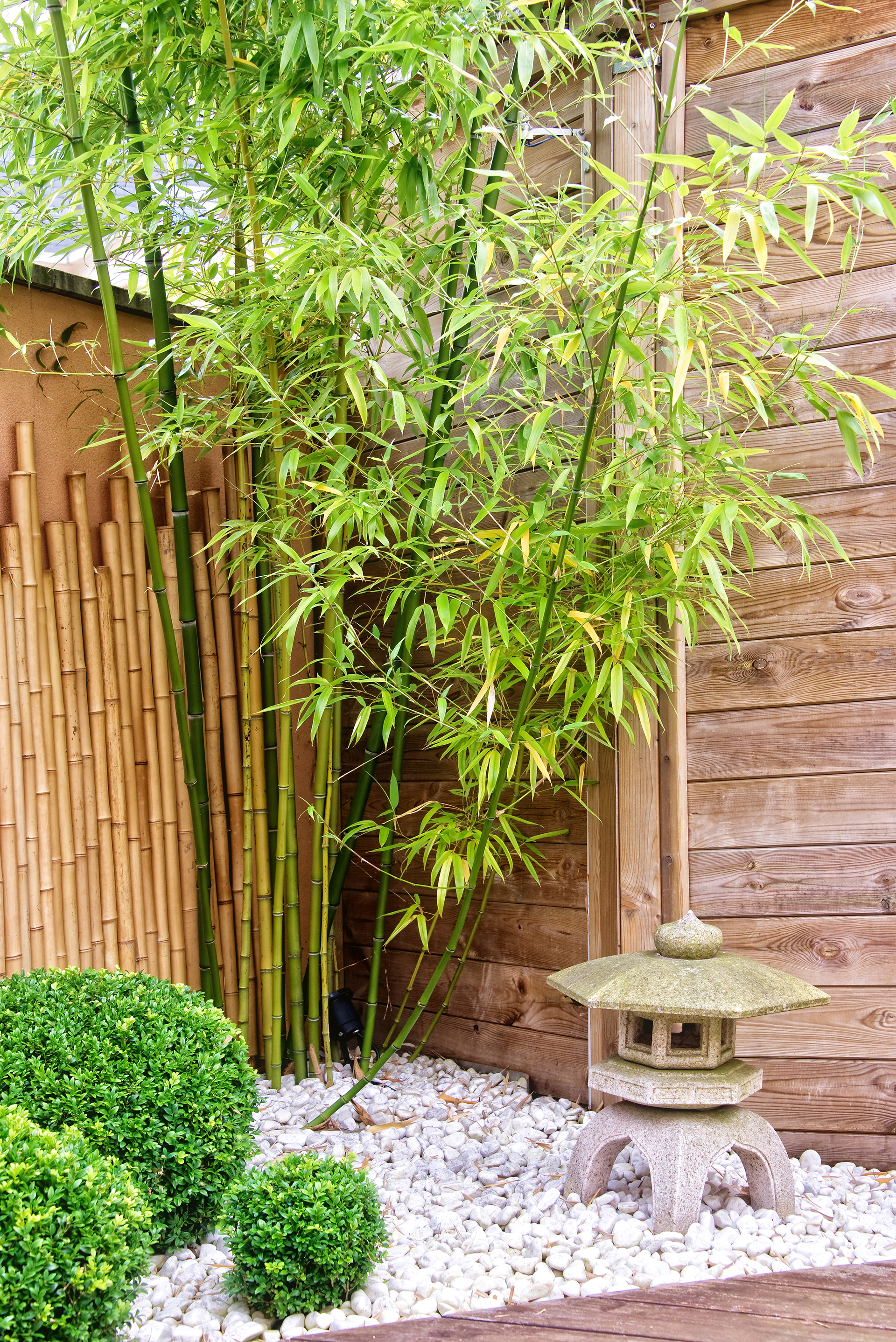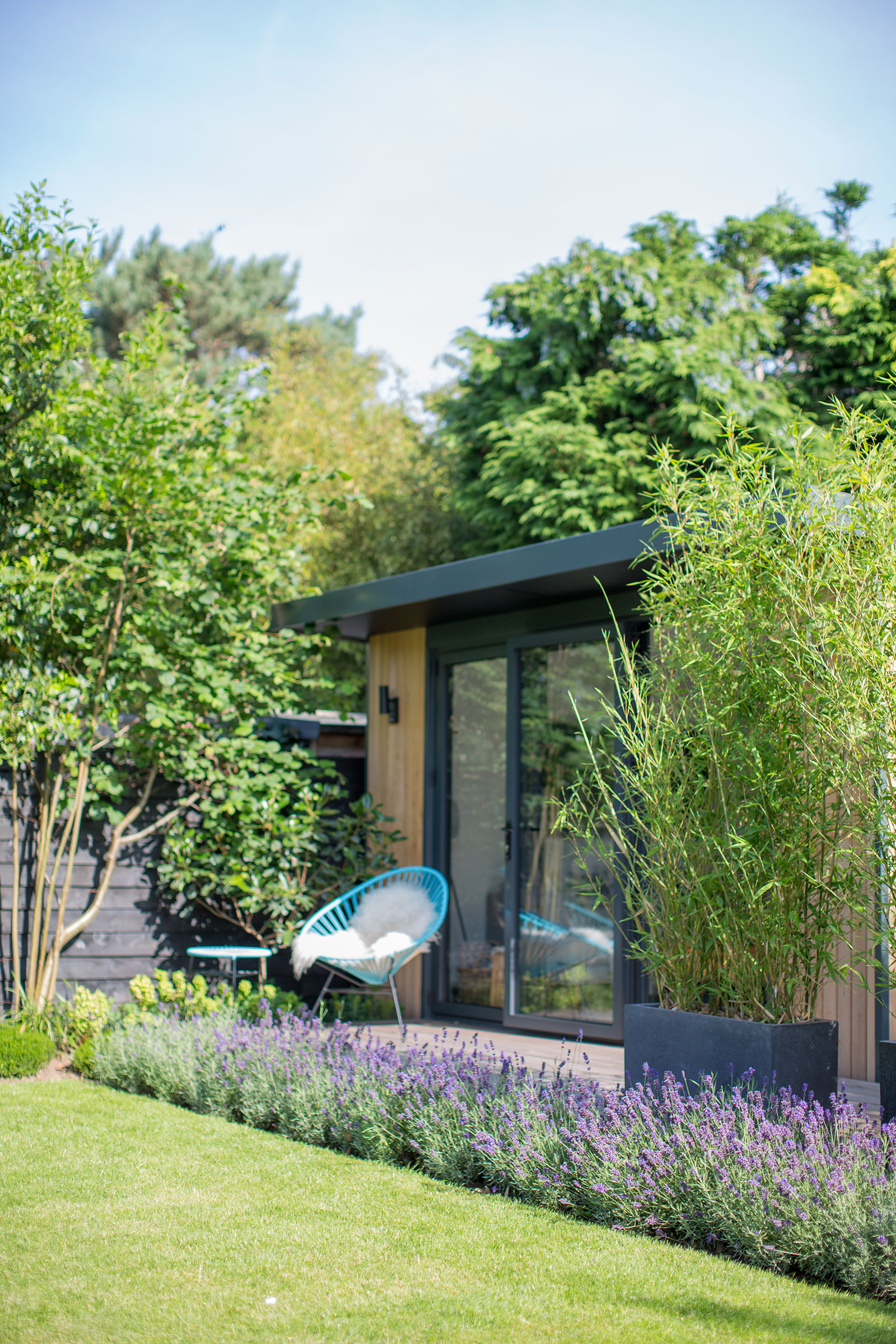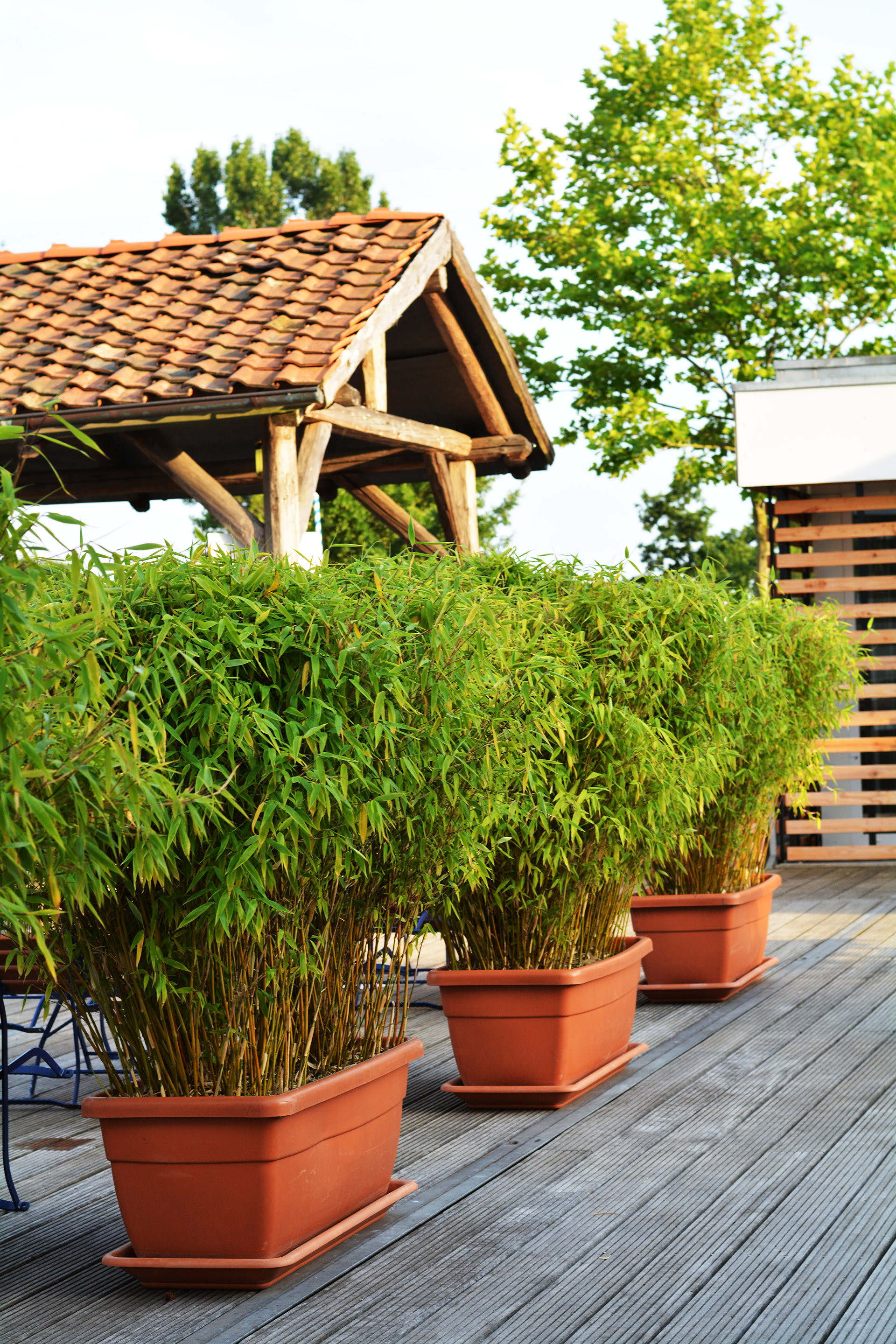How to stop bamboo from spreading
This ornamental plant is known for running wild; find out how to stop bamboo from spreading with our expert advice


If you've ever grown bamboo, you have definitely wondered how to stop bamboo from spreading. It might sound impossible, especially as the majority of weed-suppressant groundcovers will not stop it, but there are actually plenty of effective ways to stop bamboo from invading your garden.
If you are looking to introduce a bamboo plant into your backyard ideas, then you should give some thought to how to stop bamboo from spreading at the same time. By doing this when you are first planting your bamboo, you will save yourself the challenge of controlling an unwieldy plant further down the line.
Despite its invasive propensities, bamboo is actually a highly beneficial plant when managed effectively. Due to its fast-growing nature, bamboo is often planted for screening since its dense, evergreen leafy appearance makes it an ideal plant for achieving garden privacy ideas.
'Furthermore, bamboo is an animal-resistant plant. Deer, raccoons, rabbits, and other mammals are not drawn to it at all, so planting bamboo in your garden can work to prevent animals from getting into your other plants,' explains Jeremy Yamaguchi, CEO of Lawn Love.

How to stop bamboo from spreading
When it comes to figuring out how to stop bamboo from spreading, there are several different methods from which you can choose: from physical barriers through to chemical treatments.
Bamboo plants have two different growth patterns, there are clumping rhizomes and running rhizomes. Clumping rhizomes are the more manageable of the two and can easily be stopped from spreading with regular pruning. However, bamboo plants with running rhizomes are more problematic.
Bamboo plants with running rhizomes can grow underground for up to 20 feet from the main plant. 'If left alone, rhizomes will travel under driveways, patios, house foundations, and even through the cracks in concrete floors such as sheds and garages,' says experts from Rhizome Barrier. Therefore, if growing bamboo with running rhizomes, it is vital that you know how to stop bamboo from spreading to protect your garden space and prevent your bamboo plant turning yellow with stress.
Design expertise in your inbox – from inspiring decorating ideas and beautiful celebrity homes to practical gardening advice and shopping round-ups.

1. Stop bamboo from spreading by installing a sub-surface barrier
Using a subsurface barrier or root barrier to stop bamboo spreading is one of the most common methods. It is very similar to planting your bamboo in a large pot which is submerged under ground. The barrier contains the roots and prevents runners from cropping up elsewhere in your garden.
There are several different options of root barrier from which to choose. Typically these root barriers are made from high-density polyethylene and are purchased as a roll which is unrolled and buried below the ground to encircle the plant and prevent the roots from spreading. If you're wanting to stop bamboo from spreading opt for a root barrier of between 24 to 30 inches deep and a thickness of at least 60 mil.
One of the most efficient ways of how to stop bamboo from spreading, root barriers are fairly easy to install. Simply dig a trench around your entire bamboo plant. Dig two inches shallower than your root barrier – for example for a 30 inch deep barrier, dig a 28 inch trench – as you want to keep a small amount of the barrier above ground to prevent runners going over the barrier. Then install the barrier, overlapping at the join, and backfill.
You can also install a subsurface barrier around a pre-existing bamboo plant, however, you will need to manually break any rhizomes or roots that have gone beyond the border prior to installation.
2. Sever the rhizomes to stop bamboo from spreading

Cost-effective but physically challenging, severing the rhizomes, also known as root pruning is a simple yet effective way to stop bamboo from spreading.
'All you have to do is take a spade or shovel and push it into the soil around the outside edge of where you want the bamboo to stop. Do it over and over again, overlapping where you last pushed your spade, until you have gone around the perimeter. This breaks the roots at that perimeter and prevents them from growing past it,' explains Jeremy Yamaguchi.
The main downside of this method is that it is only temporary and you will need to repeat it a few times every year to keep your bamboo plant from producing runners.
3. Stop bamboo from spreading by growing in a pot

By far the easiest method to stop bamboo from spreading is to plant it in a pot rather than directly into the ground. The pot contains the roots and prevents the bamboo from sending runners into the soil. Bamboo also makes for a beautiful addition to container gardening ideas and can be used as part of patio ideas to create a screen or windbreak.
One word of note is that bamboo plants are very persistent, so avoid placing your pot onto soil as this will encourage the roots to grow through the drainage holes of the pot and send out runners that way.
4. Use a chemical weed killer – as a last resort
When researching 'how to stop bamboo from spreading', you will come across lots of different weed killers. While efficient, weedkillers are not the best option if you have other plants nearby or have pets or children that have free access to your garden. Weed-killers should only ever be used as a last resort due to the negative impact they have on wildlife garden ideas. You should first try the physical methods for how to stop bamboo from spreading before reaching for a chemical solution.
If none of the above options have worked, then weed killers can provide an effective, low-effort option that can be used to stop bamboo from spreading. Start by cutting down the unwanted canes to ground level. Then dress in protective clothing and ensure that children and pets are out of the way. Then apply a glyphosate-based weedkiller to the stumps – this is the same method used for how to remove Japanese knotweed. Cover with an old carpet and tarp and ensure that pets and children are kept away. Within a few days, this will kill the unwanted plant without harming the main bamboo.

How do I keep my neighbor's bamboo from spreading?
You can keep your neighbor's bamboo from spreading by asking them to install a physical barrier around the plant or requesting that they replant the bamboo in a pot. If this is not possible, then you can simply manage the runners that appear in your own garden. You can do this by manually severing the roots at the point they enter your property and then digging up any plants that establish themselves in your garden.
How do I permanently remove bamboo?
You can permanently remove bamboo by pouring boiling water on the exposed roots – this will scald the roots and then kill the plant. Start by cutting the bamboo plant as close to the ground as possible and then dig around the plant to expose the roots. Pour the boiling water on the exposed roots. Be sure to dispose of discarded bamboo roots and stems either by incinerating or binning, as these can re-establish themselves if put on a compost heap. This is also a popular method for how to get rid of weeds.
An alternative method is to simply dig up the plant. To do this you will need to cut off the rhizomes and remove from the ground. This is quite a labor-intensive method and you need to make sure that you've severed all the roots as otherwise you will have runners that will appear elsewhere in your garden.

Having graduated with a first class degree in English Literature, Holly started her career as a features writer and sub-editor at Period Living magazine, Homes & Gardens' sister title. Working on Period Living brought with it insight into the complexities of owning and caring for period homes, from interior decorating through to choosing the right windows and the challenges of extending. This has led to a passion for traditional interiors, particularly the country-look. Writing for the Homes & Gardens website as a content editor, alongside regular features for Period Living and Country Homes & Interiors magazines, has enabled her to broaden her writing to incorporate her interests in gardening, wildlife and nature.